Hello everyone! My name is Lee and I am a cultural travel photographer. I would like to share my experience in taking artistic travel photos. No complicated theories here, just some practical approach I use. I hope it will be helpful to some of the readers who are in their early stage of developing their skills. Comments and discussion are welcomed.
1. Tell A Clear and Simple Story
A good photograph, at a glance, within seconds, the visual message should be immediately clear to the viewers. To achieve this goal, the story must be clear or easily understandable. A photograph, unlike a book, is a snap shot of a moment in time. So it is not capable of delivering too much of information. So we should keep the stories simple.
Here is a simple story. An old lady doing her morning ritual at the Ganges river. Her body language and concentration, the water pillar created, the circulating ripples around her, the morning light at the top left corner, combined to a serene and spiritual scene. There is nothing else in the scene that need to be related to her. So it cannot be a much simpler story. This is an example of a simple scene and a simple story.
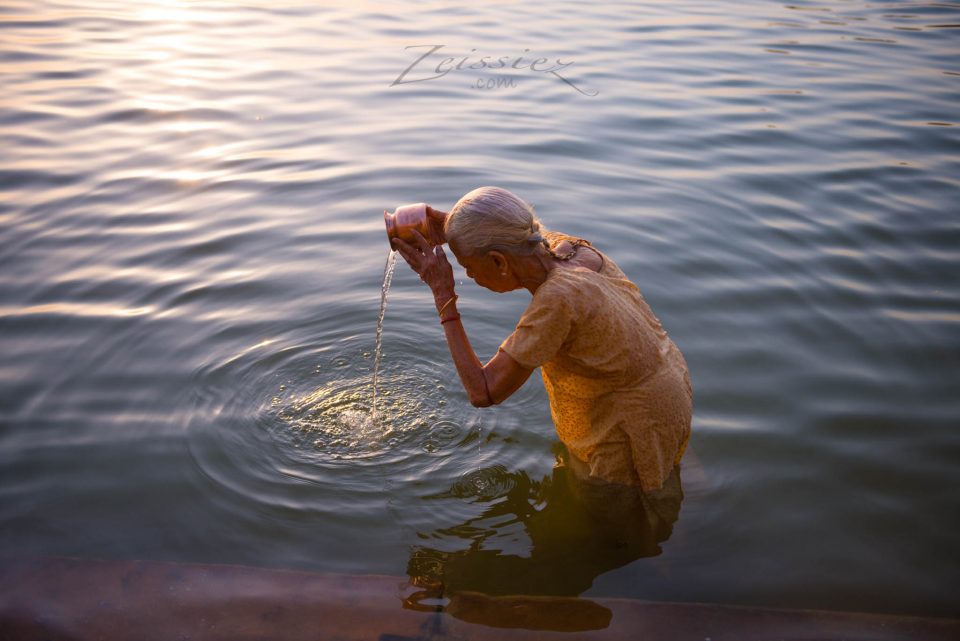
Now, do not mistake a simple STORY with a simple SCENE. A simple story is not necessarily one with few elements. For example, here is a photo of a street in Dhaka. It was raining, the traffic was in absolute chaos, the power cables were all over the place much like spider cobweb. But, the STORY is simple. The elements in the photo contribute positively to make a strong image. There is no elements in the scene that takes away from the story or causes confusion. This is a simple story, one which is easily understandable.
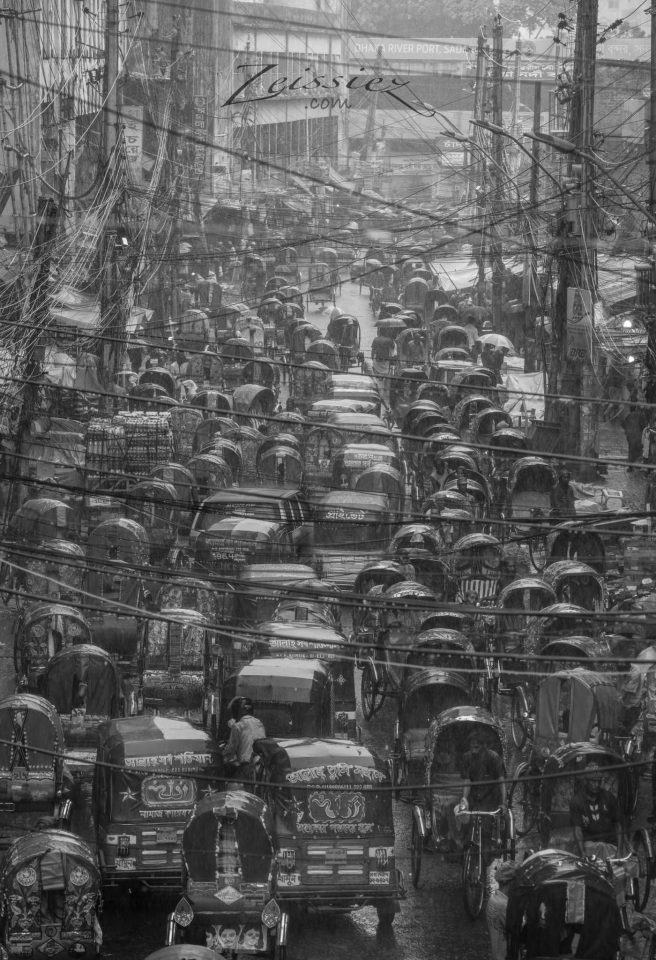
Now let’s take a look at the photo below. There were quite something going on there: A fishing boat, an interesting tree, some ducks with the keeper, two fishermen with a fishing net. The main problem with this photo was lack of a main focus point or main subject. The subjects in the scene take away from one another. The story is complicated, and sparse.
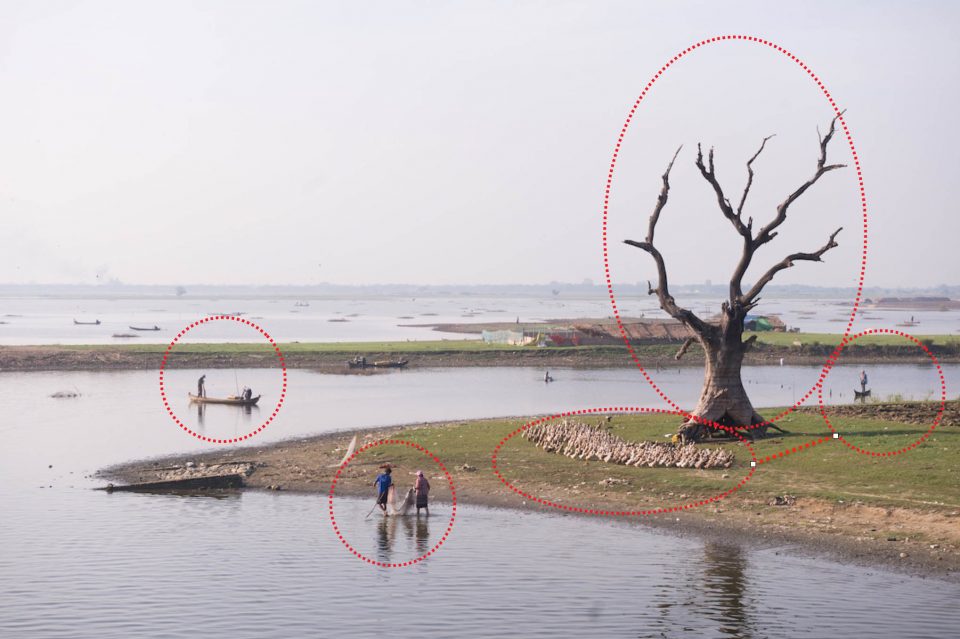
So it is good to keep a story simple and clear. Good contents and good composition are keys to a simple and clear story. We will look at each in the following sections.
2. Have Good Subjects / Elements
Interesting subjects and elements within photographs, or simply “contents” are meats and bones of a photo. They are the reasons why we bother to raise our cameras and take photos. There should be something that interests us to begin with.
Below, we have a fisherman in Yangshuo. The subject was nice and interesting, there were some mountains at the back to give indication of the whereabouts. The other elements such as the oil lamp, the cormorants and the fishing net, all worked together to form a good and rich photo. In this case there is a good story and it is presented clearly, hence it is a good photo.

We can take a perfectly composed photo. But if there is a lack of contents, then the story may not look attractive. On the other hand, we can make mistakes in the composition and still get away with a decent photo if the content is good. For example, In the following photo, the composition is not perfect. On the right of the truck, there was a man crossing the street. But in this case, that does not affect much the photo, because the truck together with the man on top was a dominant figure in the photo. This photo is still a keeper. So it is always good content first, then followed by good composition, good lighting and so on.
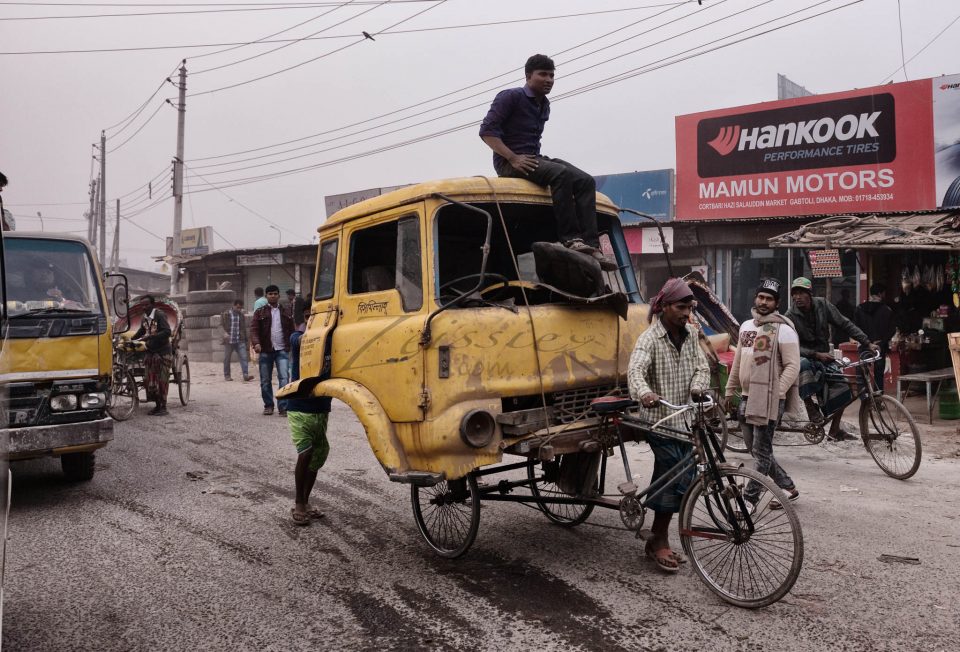
The content of a photo can be a beautiful landscape, a funny scene, something cute, static objects, a portrait so on and so forth. The best way to get good contents is of course to travel to interesting places, where the hit rate is high. But often they are also found on the streets, in the market, basically everywhere. Here are some examples of different types of contents:
A scenery:
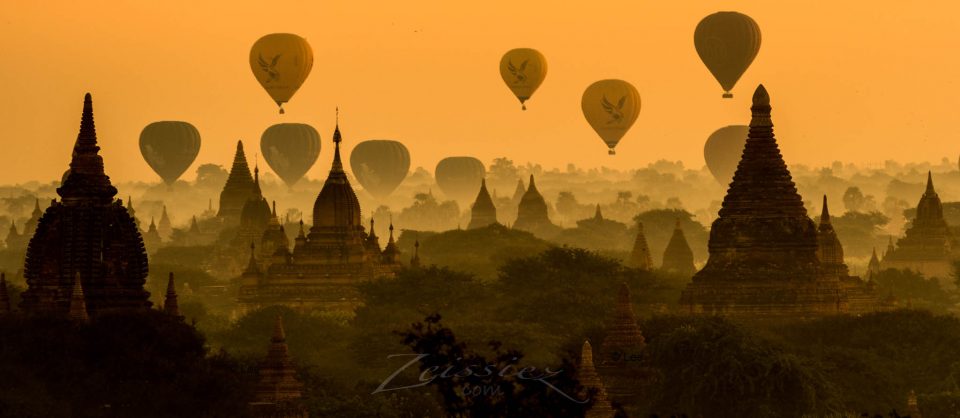
A street scene:
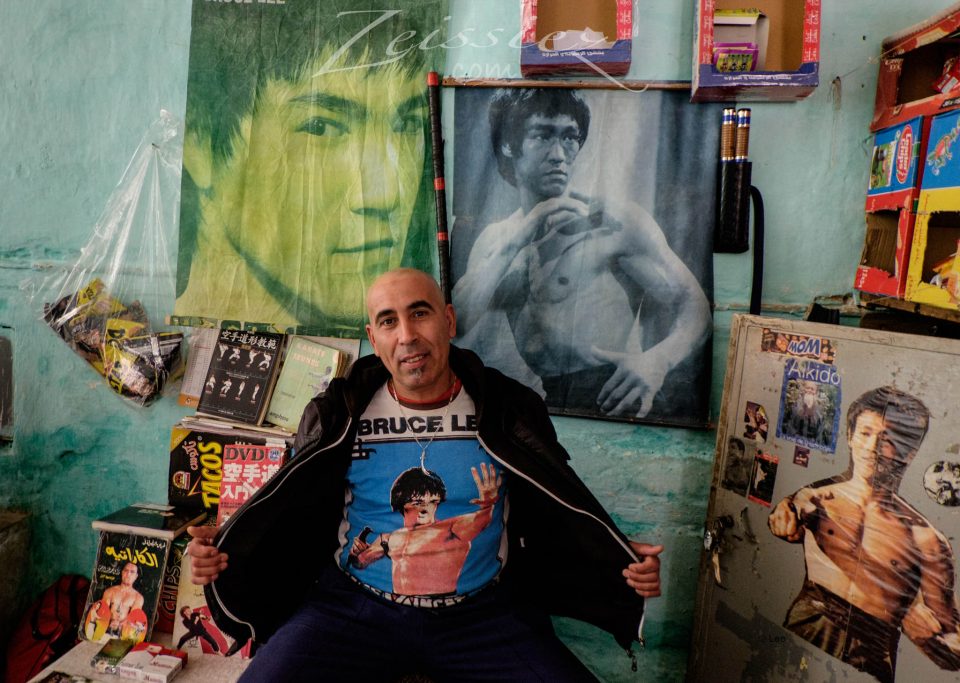
An Event:
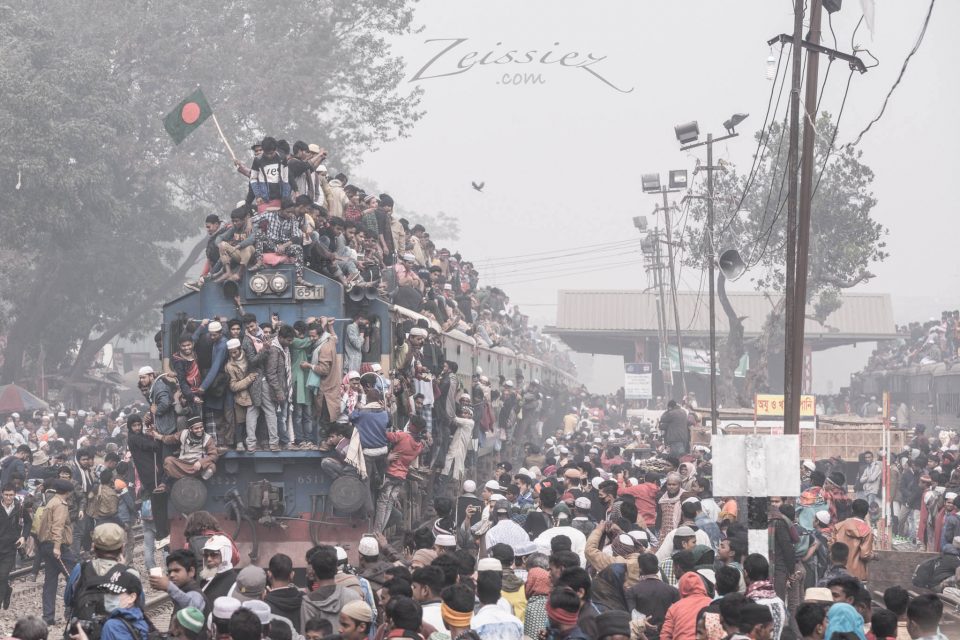
Daily ritual:
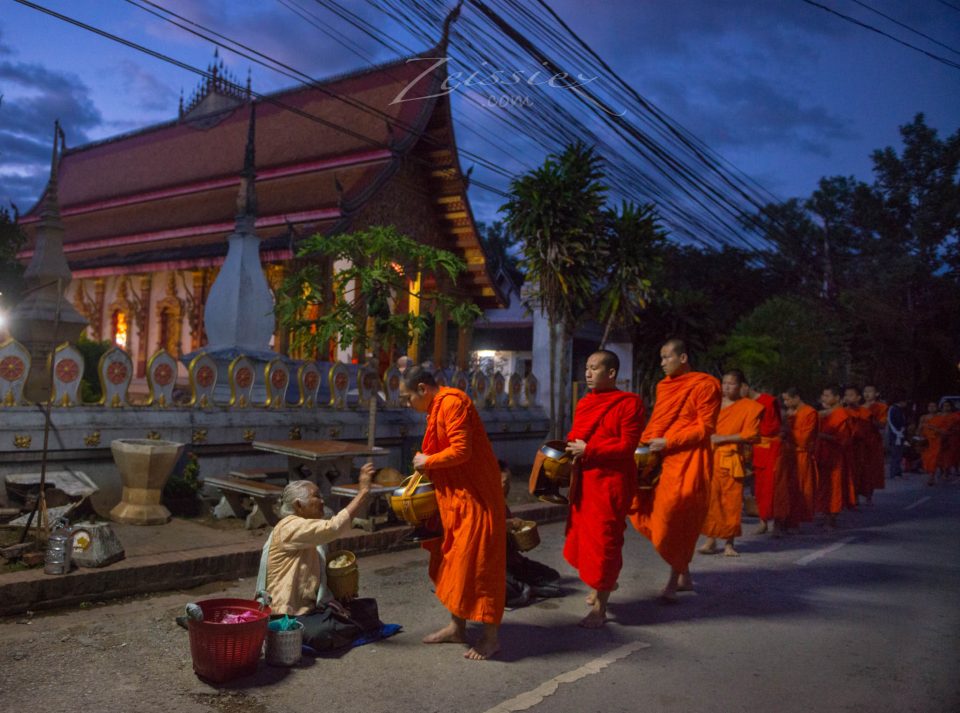
A portrait:
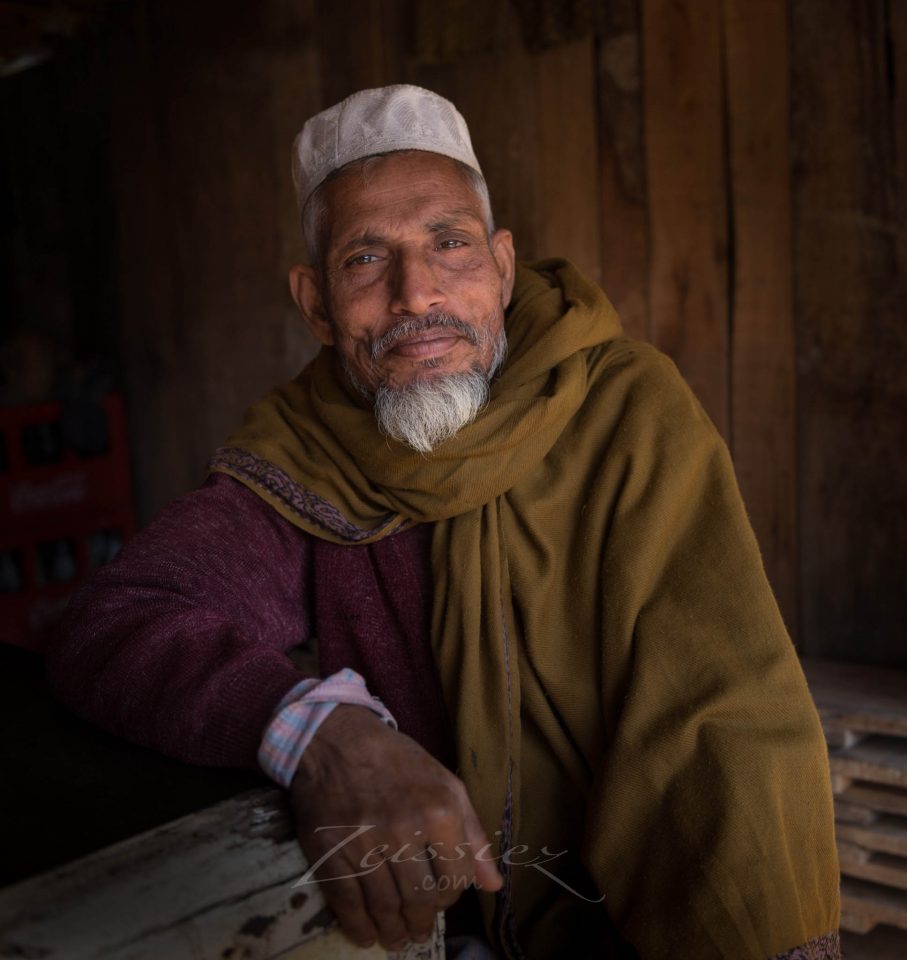
Something funny:
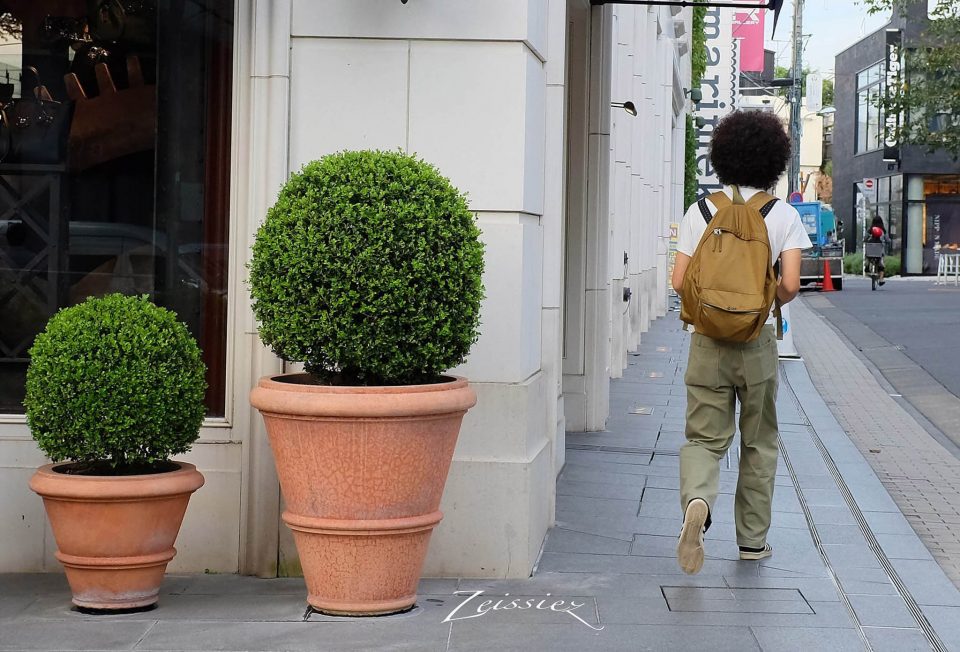
Now let’s imagine we come to a scene and we have a vision of how the story should look like, but the contents are only partially complete in the scene. What do we do? We can try to “make” the story complete. For example, in the photo below, the cats were catching some sunlight in the alley, it would be better if there were a person walking pass. So I waited and had my camera in position. Then it happened, a lady walked by, and lucky me, she did not walk in shade, nor her shadow blend with the shade. So in the case, I “made” the story.

We need to be observant and be perseverant, sometimes it takes a long time for things to happen, and sometimes it does not happen at all. But as we gain more experience, we will get better in deciding to wait or to move on.
Having good contents is job half done, we need to “put” the elements in the right places in order to bring focus, balance, clarity to the picture.
Let’s now talk about composition.
3. Don’t Underestimate Composition
There are no strict rules in composition. However, in general, there should a main subject(s), a central figure or focus point upon which the eyes of the viewers can focus on immediately, before they move on to the next bits in the photo. Then there are elements or environmental information that support the image. During the composition process, try to include as much as possible elements which add to the story, and exclude elements which do not relate or cause confusion to the story.
In the next photo, which was taken in Bangladesh, the main subject was the first Moon boat, which was closer to the camera. It was where the viewers’ eyes will first focus on. Next, we had a boat further away which plays a supporting role here. Next, we have a man there which was good to show the size of the boat, and to add some human touch to the photo. If the boats were at the same distance, i.e. same size, then it would work less well, because the eye has to pick which one to look at first. In this case, the flow is swift and sweet.
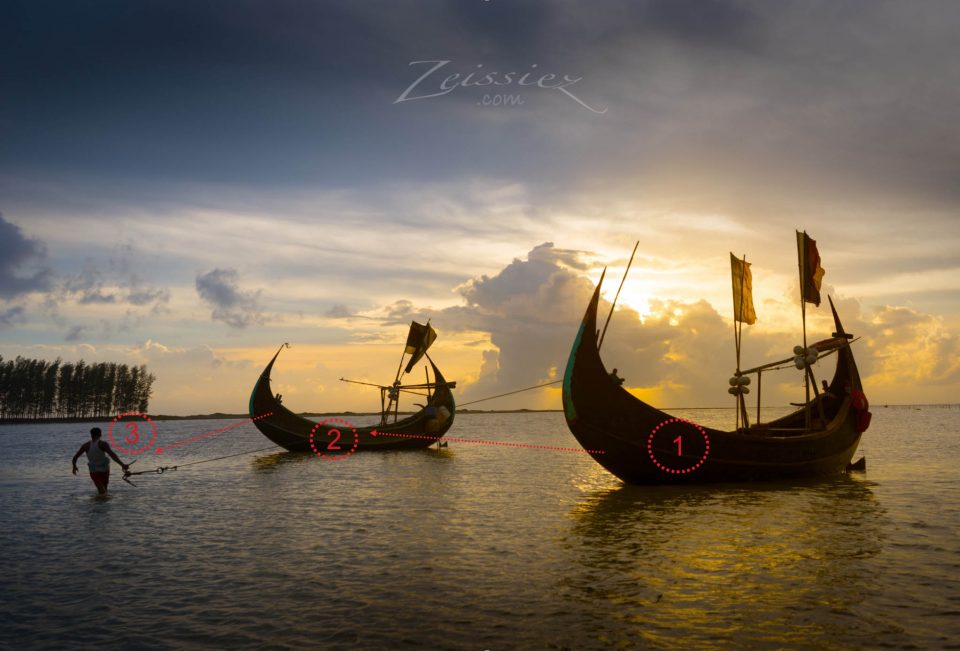
Composition was performed by constant changing of (1) focal length of the zoom lens, and (2) the position of camera – back and forth, left and right, up and down. Until the right balance was reached. There was little time to get it executed, when the anchor was dropped, the man headed home. That is why I always prefer to work with zoom lenses.
The next scene was a cloth drying field in Agra by a river bank. The cloth the man was holding was back-lighted and illuminated, and immediately became a point of focus. Then the man at the back played a supporting role.
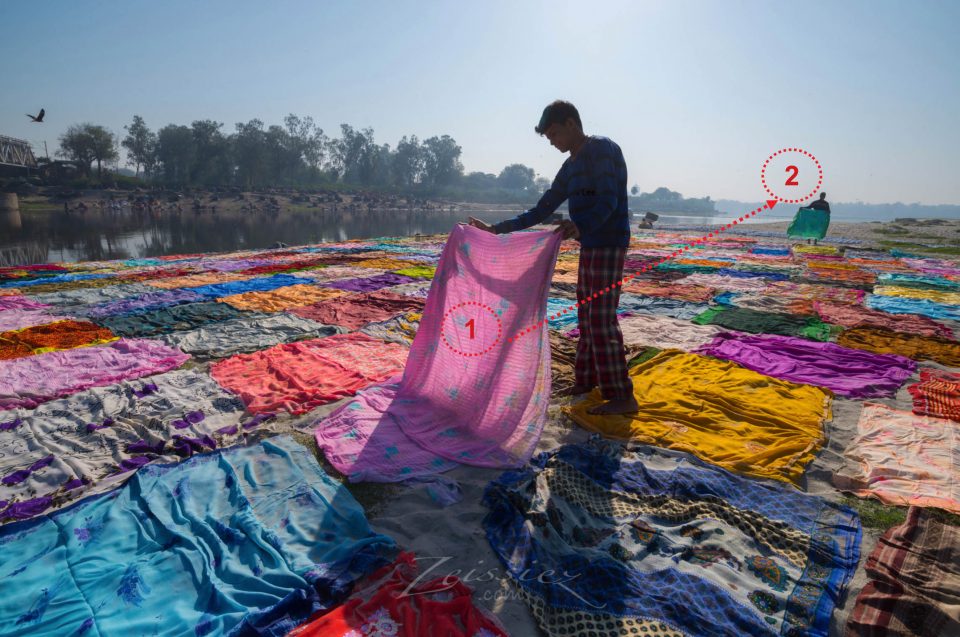
Here is a photo of some female laborers working in a construction site in Rajasthan. The lady at the centre looked more attractive and her head scarf has a different color than the other two ladies, so she was chosen to be the main subject. But she was smaller compared to the other two, if all of them were facing the camera, there would be much less focus on the girl in the middle. So I waited until the other two turned away. There were missed chances, but I finally got this shot. In this case, the lady in the centre is the main character, with the other two supporting the story.
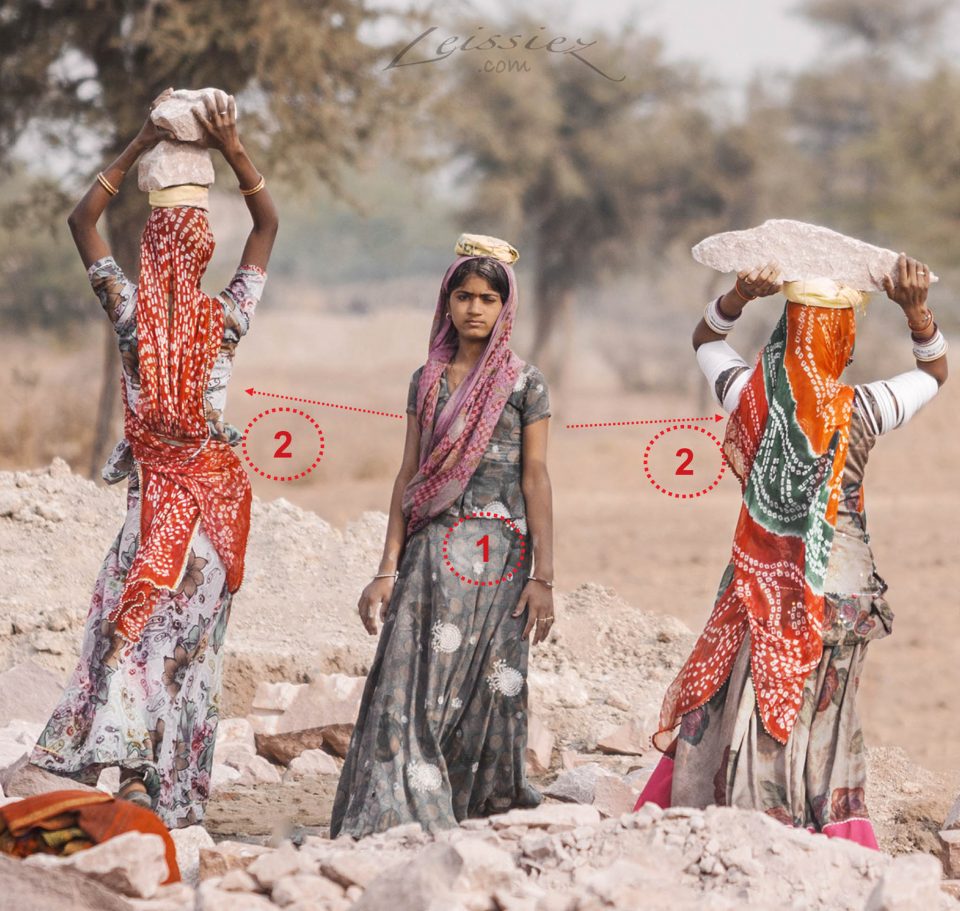
Next, a street scene in Jaisalmer. In this case, because of the perspective created by the lens, all the three characters looked equal to our eyes. Our eyes do not hunt for a focus. Each character has their own little story, and it does not matter which one has the eyes focus on first, the eyes will look at each, learn the story and move on to the next.
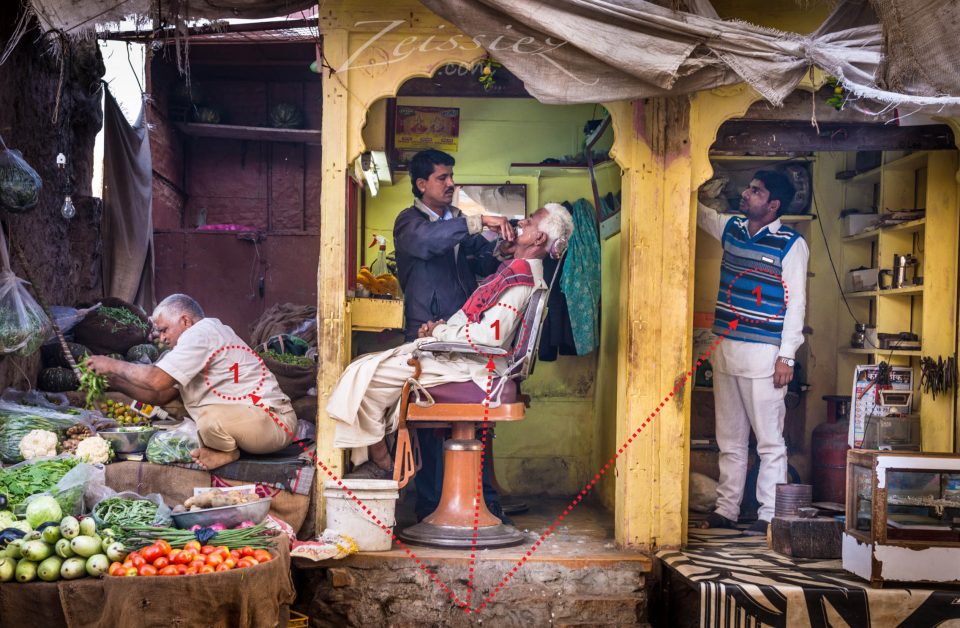
Here is a similar scene in Bangladesh:
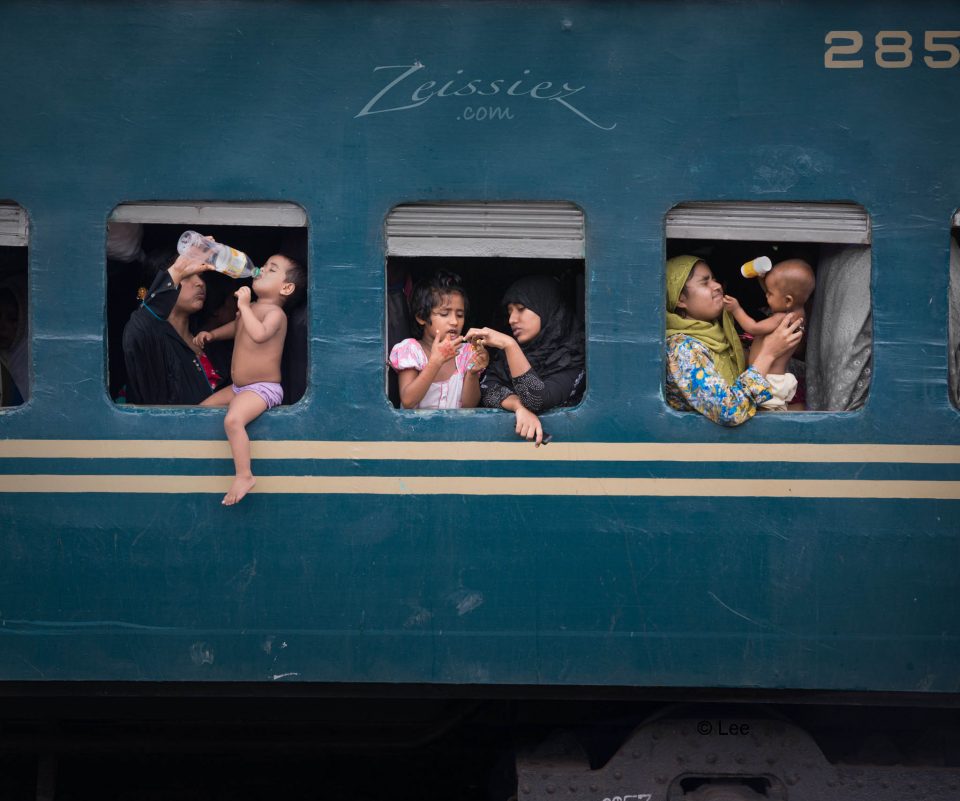
These two photos were shot at mid-tele focal lengths respectively to keep a relatively flat perspective. Then all the characters are equal in size and perspective, which is important to achieve a good result. They will not work if shot at wide angle, 24mm for example.
A few words on “Zoom vs Prime”:
When composing, the first thing we need to do is to decide the perspective we think suitable for the scene.
- By using wide angles, the subjects in the background appear smaller in comparison to subjects in the foreground. All the subjects will be stretched out in an inverse V-shape perspective.
- By using telephotos, the subjects in the background will be compressed, and appear close to the subjects in the foreground. Think African sunset, where the sun is large at the back of the elephants.
It is after this decision, that we choose the corresponding focal length. If we want good control over a composition, it is not appropriate to use just a single prime lens and simply zoom with our feet. Zooming with the feet is not the same as varying the focal length. A fixed focal lens has a fixed perspective, thus we cannot control the size and the perceived distance between the subjects in the background and foreground. Perspective control is one important aspect in composition.
We could use a set of prime lenses, 24mm, 35mm, 50mm, 70mm to replace a 24-70mm zoom lens, but that is very inefficient, unless we have each prime lens mounted on a dedicated camera. That is why I always prefer working with zoom lenses than with prime lenses, because zoom lenses allow me to change the perspective and the composition constantly, and get the shot quickly.
I do encourage beginners to use prime lenses, for example, a set consisting a 28mm F2.0 lens and a 50mm F2.0 lens. Because then it is easier to get a good feel of how aperture size affect depth of field and how focal length influence perspective. With a zoom lens, one tend to get lazy by zooming instead of positioning.
Before we move on to the next section, it is worth mentioning that, our minds have funny preferences when it comes to numbers. For example, we are at ease with 1,2,3,5 but not 4 characters in a scene.

Above is a scene in Jaisalmer. Three camels worked great for this scene, but certainly not four! Two camels would work too, not as good as three but certainly better than four. Note that the number of riders on top are different on each camel, and this works with our minds. Imagine that the second camel has two riders on top, just like the third camel, then it is less effective, because then it would be the same as the third camel, leaving the first camel at odd with the second and third camel. Also note that if the first camel carried two riders, the second camel one and the third camel no rider, then the scene can be front heavy.
4. Lighting, Lighting, Lighting!
Generally, the worst light is when light-source makes the subject blend to the background. I often shoot side-lit or back-lit so that the main subjects pop out from the background, to allow more depth in the scene. But there are certainly exceptions.
Here is a side-lit scene:

Here is a back-lit scene:
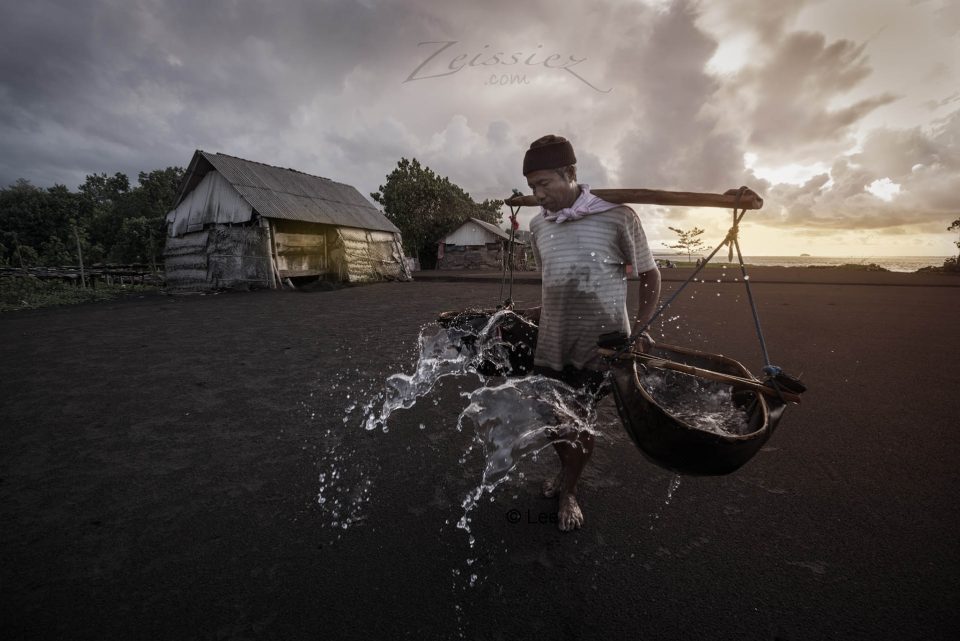
But that is not to say to avoid dull lighting at all cost. We need to know what light can do to our photos, and take advantage of it.
Here is a photo with an abstract look, which was taken in dull and flat lighting condition:
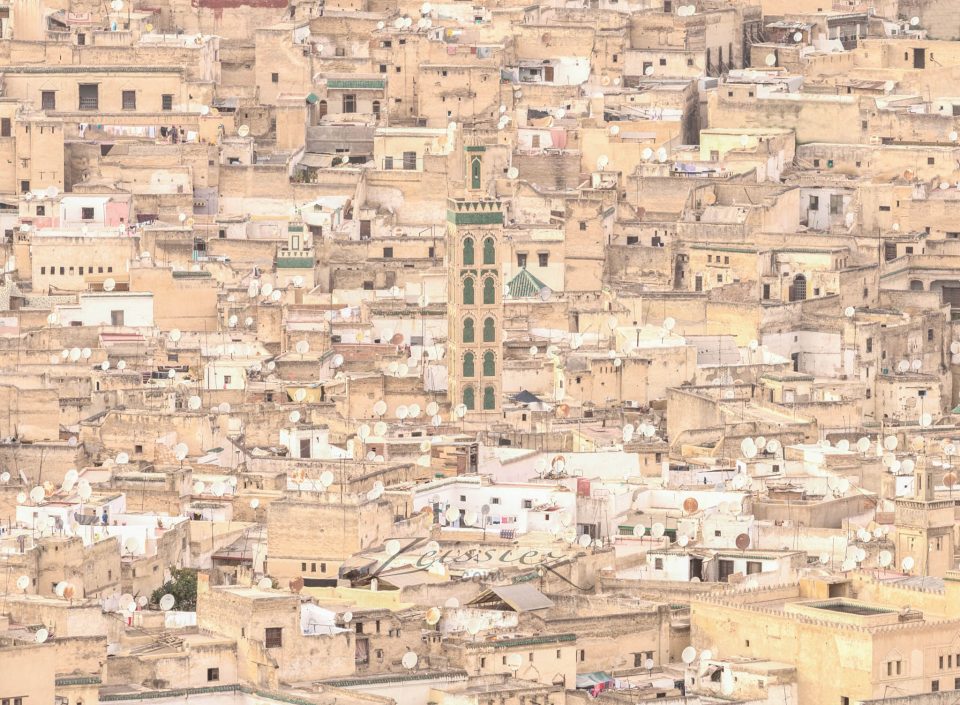
Having good contents, good composition, good lighting, a photo can be taken to the next level by adding some drama, emotion and life.
5. Adding Life, Emotion and Drama to Our Photos
Photography can be related to cookery in certain sense. The content of a photograph is the like meat in the pot. Composition is our onion, potato, tomato in the right proportion. This following section is about salt, pepper and our secret sauce. The important thing to note here is, before we cook, we should already have in mind how the final dish should taste like. It is a balancing act of composition, positioning, lighting etc.
5.1. Rain, Mist, Dust, Cloud
“When storm comes, run for your camera”. Rainy, misty and dusty backdrops can be perfect for dramatic photos.
Here are some sample photos.
Rain:
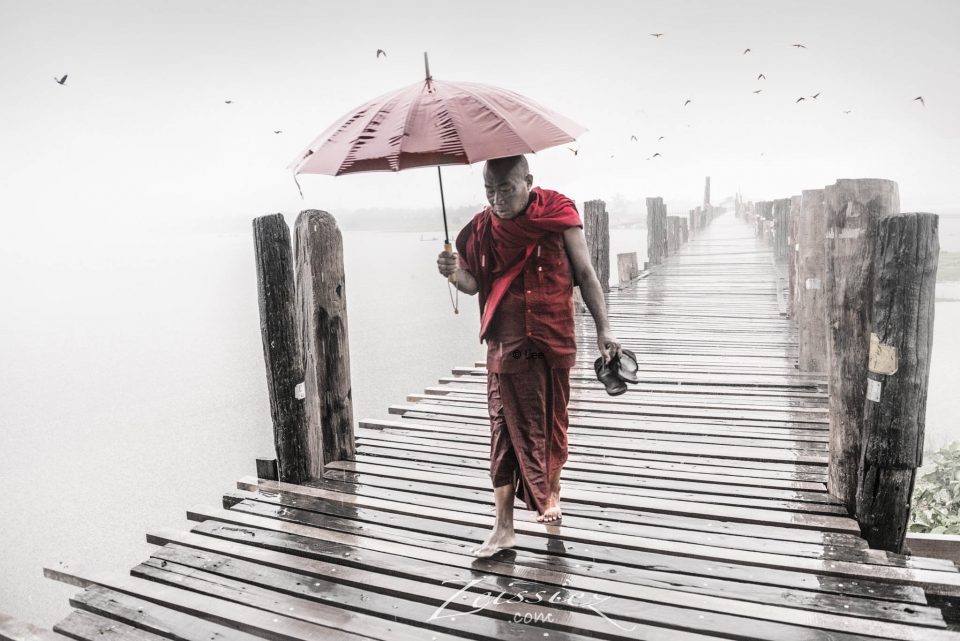
Mist:
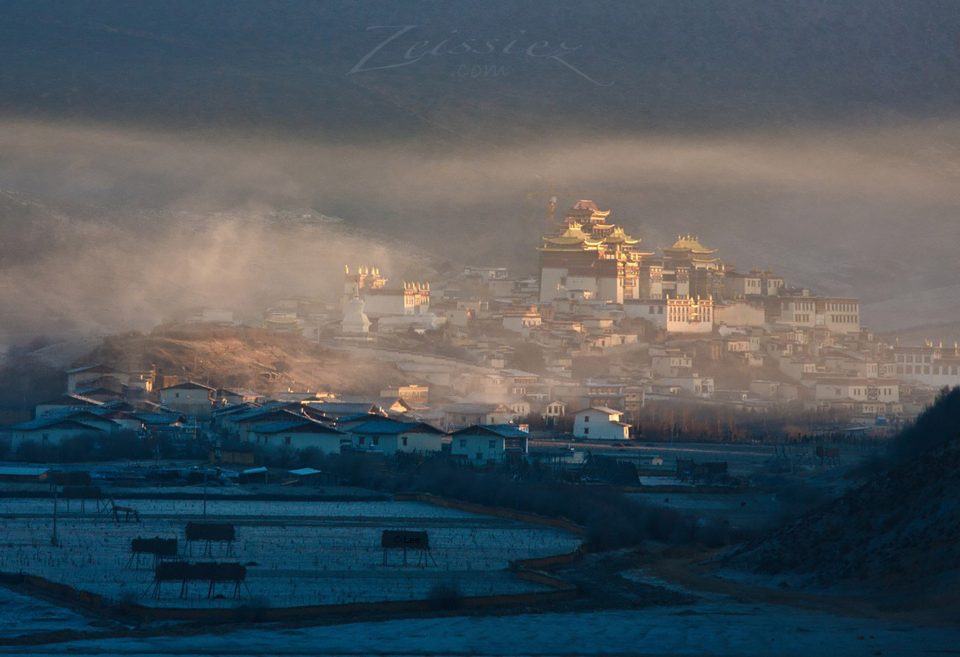
Dust:
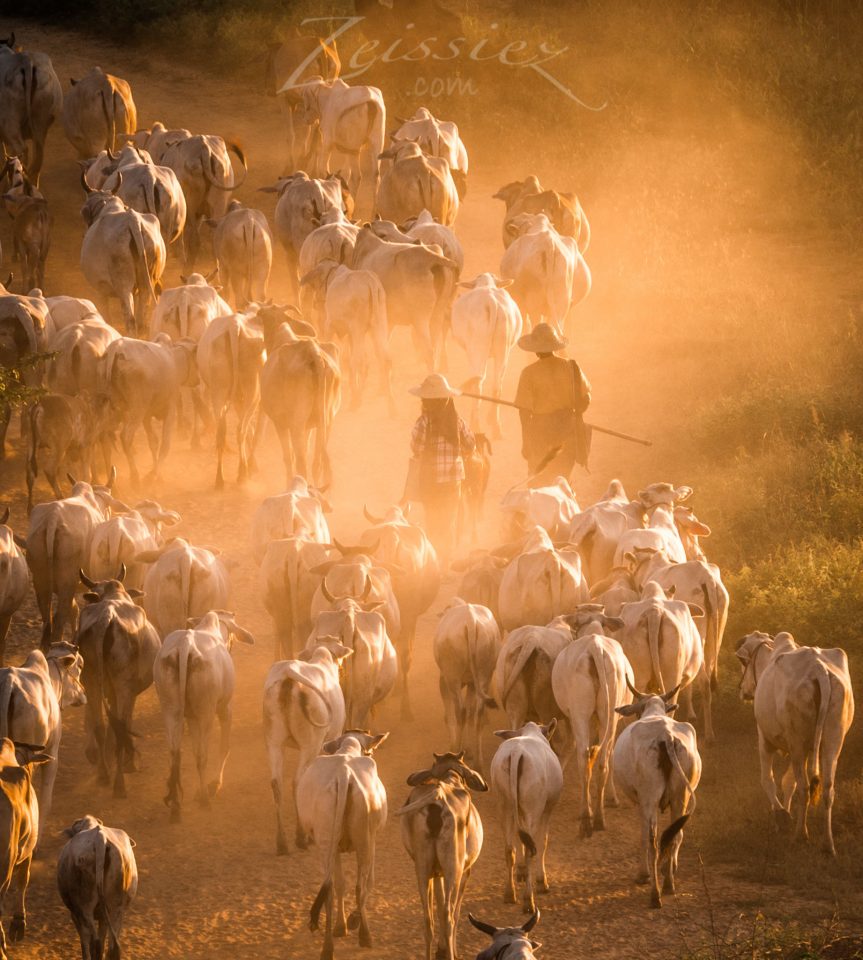
Cloud:
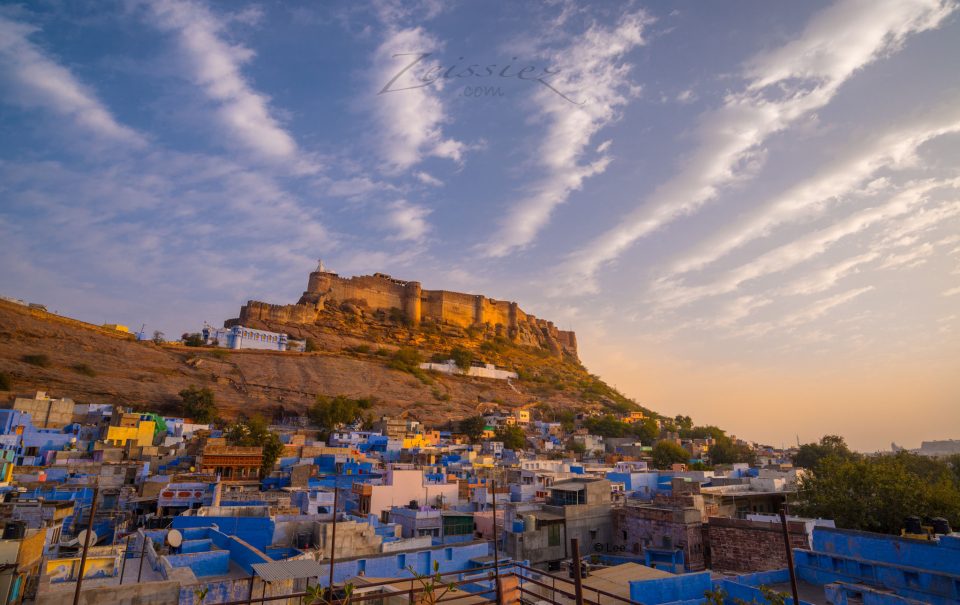
5.2. Rays and Sunstars
Ray:

Sun-star:
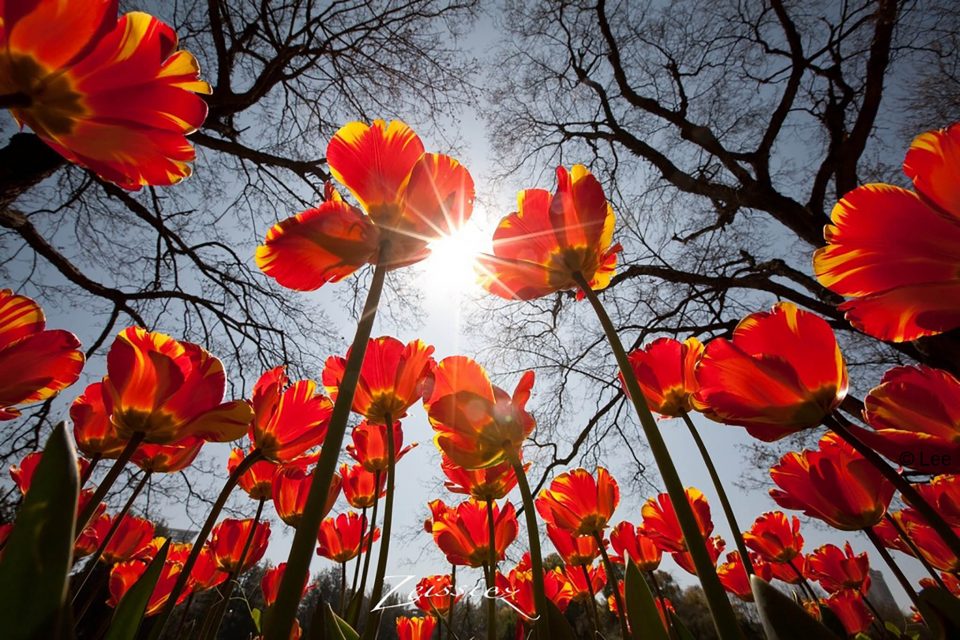
Movement, Tension, Suspense, Intrigue
In the following photo, the bottom part of the cloth on the left was lifted by the movement of the monk. The cloth, illuminated by the sunlight in the foreground, was brought to life by the movement. Without the movement, this photo is something else altogether.

Here we have another example of how movement brings life to a photo. Again, with a zoom lens, I was able to react quickly to grab the shot.

Here are a few more examples:
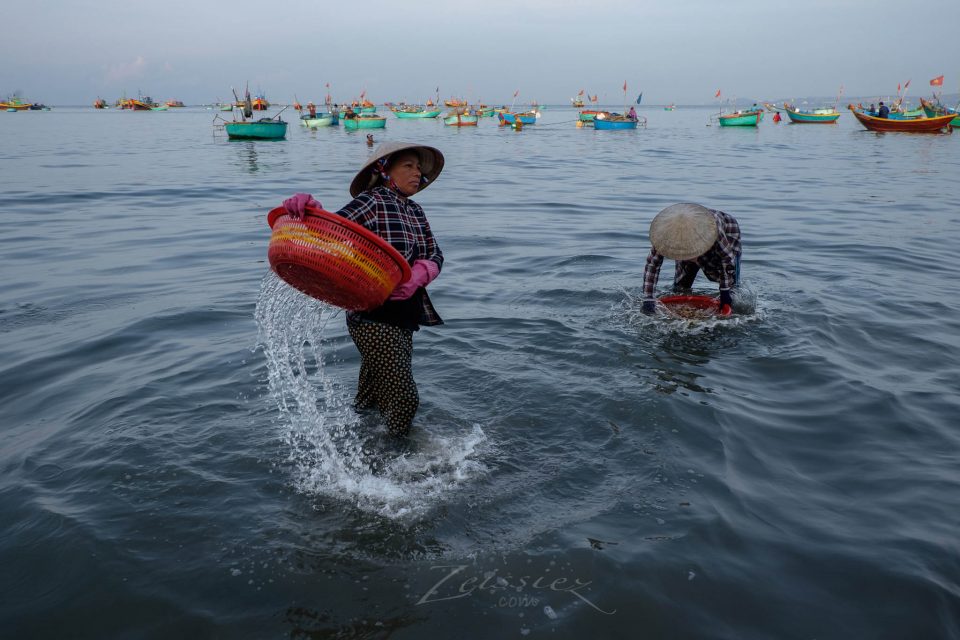
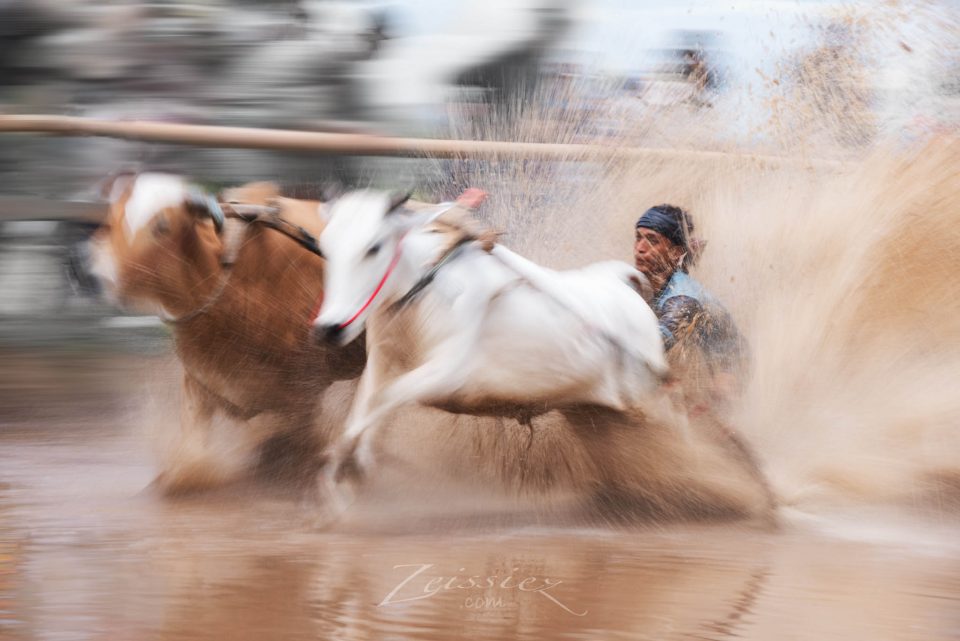
Timing is critical in this kind of shots. We may adopt the old-school way, aim for a single shot. Or, with the current crop of new mirrorless cameras which allow as much as 7~11 frames per second, we may use continuous shooting mode to make sure nothing is missed. That is, if we do not mind spending lots of time deleting the unwanted photos.
One good way of preventing the viewers from falling asleep looking at our photos is to intrigue them, by hiding part of the subject which the viewers can imagine. In this photo, one-third of the cat was intentionally left out, because a whole cat would take too much attention away from the cactus. By hiding the head of the cat, there is a right balance, and we have the viewers intrigued. The photo becomes more interesting.
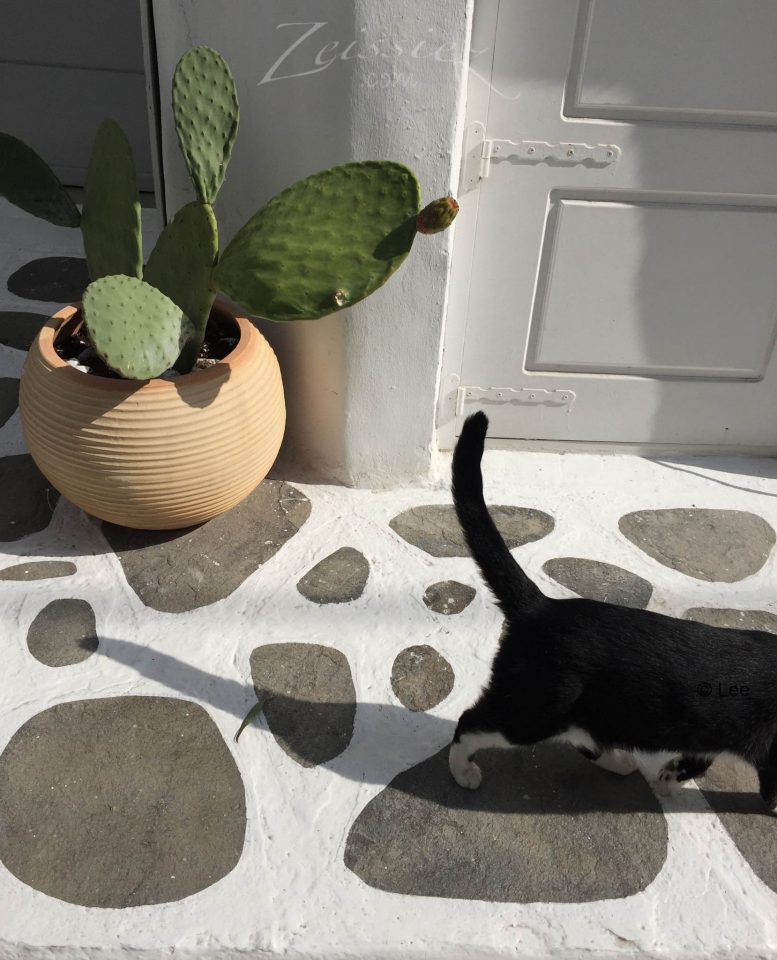
Here is another photo, taken in India. Again, a portion of the man was left out. But we still know what is going on 🙂
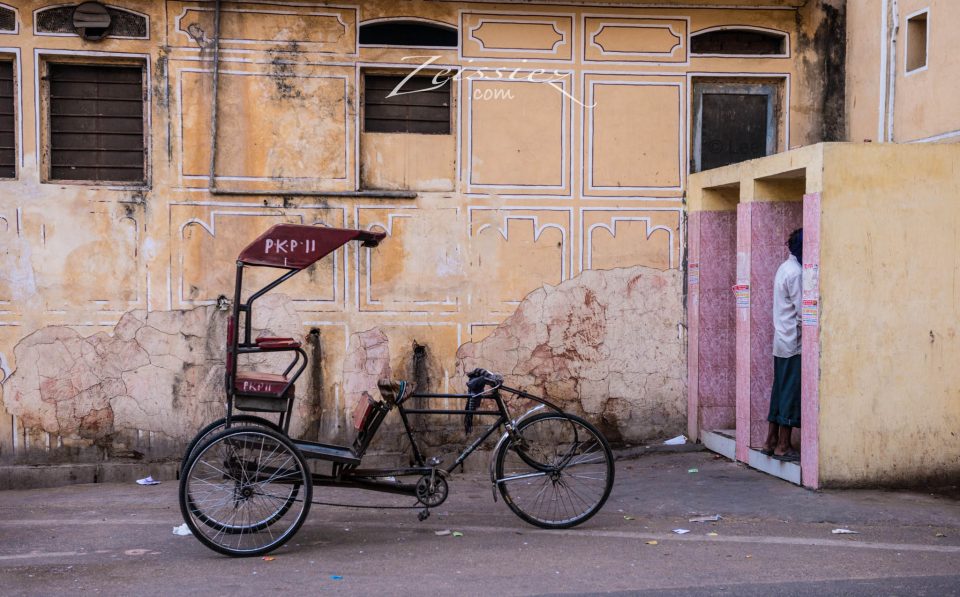
6. Conclusion
We can take traveling as opportunities to do creative art. We may have learned a lot from books, but the key is to put what you learn into practice, and have good continuity in what you do. Be broad-minded when creating your vision and pay attention to details when you press the shutter release button. Happy shooting!